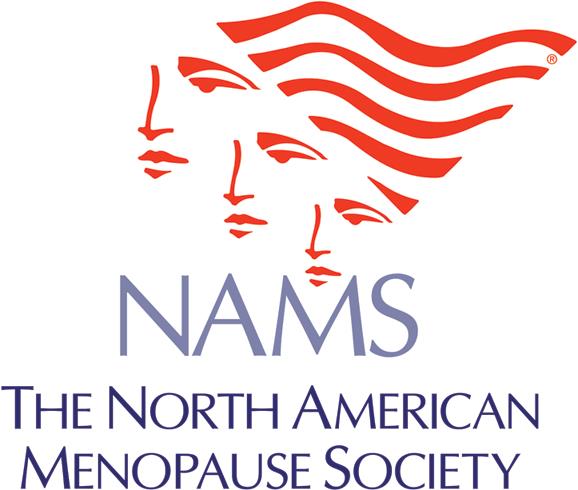By: Red Hot Mamas
Published: June 29, 2016
Aerobic Exercise Improves Cardiovascular Disease Risk Factors in
Postmenopausal Women with Nonalcoholic Fatty Liver Disease
CLEVELAND, Ohio (Wednesday, June 29, 2016)—In an article publishing online today in Menopause, the journal of The North American Menopause Society (NAMS), Rosamar E.F. Rezende, MD, PhD, and colleagues in São Paulo present results of their study testing the efficacy of aerobic exercise in postmenopausal women with nonalcoholic fatty liver disease (NAFLD). NAFLD is considered a cardiovascular disease risk factor, independent of other risk factors, and is associated with insulin resistance, abdominal obesity, hypertension, dyslipidemia, and type 2 diabetes mellitus. Clinical manifestations include steatosis, fibrosis, cirrhosis, and hepatocellular carcinoma.
In recent years, the prevalence of NAFLD has increased in conjunction with the worldwide obesity epidemic. Unfortunately, it is highly prevalent but not often detected in postmenopausal women, in whom it is associated with the metabolic syndrome and dyslipidemia. Decreased estrogen production during menopause is associated with changes in body composition, exposing women to the risk of increased body weight and abdominal obesity, which contributes to the development of NAFLD, along with insulin resistance, dyslipidemia, and increased risk of cardiovascular disease.
People with NAFLD have lower cardiopulmonary functional capacity, which independently increases cardiovascular risk. Improved cardiorespiratory fitness has been associated with lower all-cause mortality risk in women with elevated glucose levels or with diabetes.
Previous studies have shown the benefit of physical activity in postmenopausal women regarding reduction of total body and abdominal fat, but studies have been scarce about the benefits of exercise training in postmenopausal women with NAFLD. This study by Rezende and associates consisted of 40 women confirmed to have NAFLD who were randomized into two groups: an exercise training group (n=19) and a control group (n=21). Most participants were obese, and diabetes, hypertension, and dyslipidemia were common comorbidities in both groups. All participants were given a reduced-calorie, standardized diet. The exercise program consisted of 24 weeks of a supervised exercise training program, twice a week. Training sessions were composed of a 5-minute warm up followed by 30 to 50 minutes of treadmill aerobic exercise and 5 minutes of cool down. Exercise sessions lasted between 30 and 50 minutes, with increases in exercise duration every 8 weeks.
Body composition parameters (body fat mass, body fat percentage, and skeletal muscle mass), clinical and laboratorial parameters (liver enzymes, lipids, glycemic profiles; assessment of insulin resistance; and cytokines), aerobic conditioning (a maximal cardiopulmonary test), and fat liver content were measured at baseline and at study’s end. Height, weight, body mass index (BMI), and waist circumference (WC) were also measured. Comparisons were made within and between the two study groups. Cardiopulmonary functional capacity was assessed by measuring the time to exhaustion and oxygen intake during exercise.
After 24 weeks, the researchers observed a significant decrease of WC (P = 0.05), an increase of high-density lipoprotein cholesterol (HDL-C; “good cholesterol”) levels (P < 0.05), a general decrease in BMI (P = 0.06), and improved cardiopulmonary functional capacity in the exercise group. There was no significant change in insulin resistance. There was a small decrease in the rate of evolution of steatosis in the exercise group, although no significant decrease in hepatic steatosis; the degree of steatosis generally increased in the control group over the length of the study. Between-group analysis showed that physical activity had no significant effect on body composition and glycemic profile. Liver enzymes and cytokine serum levels did not change significantly between the groups.
“Nonalcoholic fatty liver disease is associated with obesity, insulin resistance, and adult-onset diabetes and is characterized by fat in the liver seen on ultrasound or other testing and elevated liver enzymes,” says NAMS Executive Director JoAnn V. Pinkerton, MD, NCMP. “This study shows the benefit of counseling women at risk of diagnosis with fatty liver disease about the benefits of increased physical activity, including less fat around the middle, improvement in good cholesterol, and improved ability to exercise (cardiopulmonary functional capacity). Longer studies with more women are needed to show whether exercise decreases the extent of fat in the liver, prevents liver cirrhosis, or decreases the inflammatory reactions seen with this disease.”
Founded in 1989, The North American Menopause Society (NAMS) is North America’s leading nonprofit organization dedicated to promoting the health and quality of life of all women during midlife and beyond through an understanding of menopause and healthy aging. Its multidisciplinary membership of 2,000 leaders in the field—including clinical and basic science experts from medicine, nursing, sociology, psychology, nutrition, anthropology, epidemiology, pharmacy, and education—makes NAMS uniquely qualified to serve as the definitive resource for health professionals and the public for accurate, unbiased information about menopause and healthy aging. To learn more about NAMS, visit www.menopause.org.
 Red Hot Mamas In Charge of Change.
Red Hot Mamas In Charge of Change.




